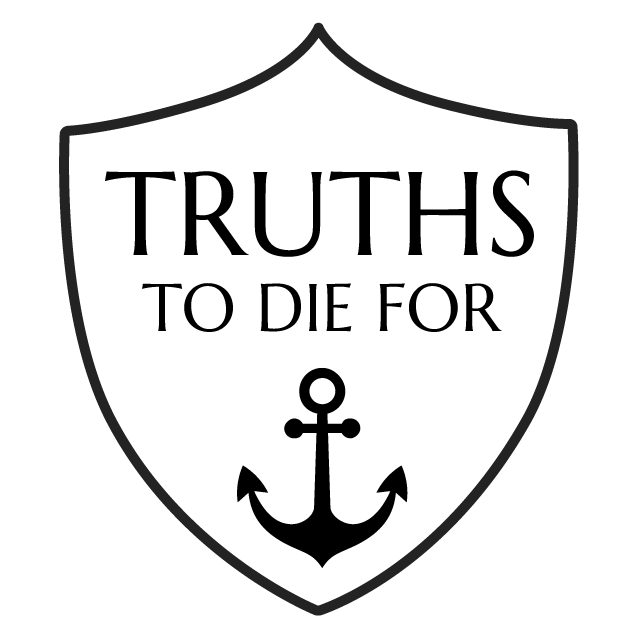Are There More Than Two Sexes?
DO CHROMOSOME VARIATIONS CREATE NEW SEXES?
Imagine a child born with Klinefelter syndrome—XXY chromosomes instead of the typical XY. Does this “prove” science has discovered a third sex? In a culture aggressively pushing gender fluidity, intersex and chromosome variations are weaponised against biblical truth. They’re even held up as evidence that male and female are merely social constructs. But does the science actually support this claim?
COMPASSION WITHOUT CONFUSION
Before we proceed, we must acknowledge something crucial: chromosome variations and disorders of sexual development (DSDs) affect real people who deserve compassion, dignity, and proper medical care. These rare conditions—affecting approximately 0.018% of births according to a 2023 JAMA review—cause genuine medical challenges, often even significant suffering.
But here’s the critical distinction: recognising the humanity and struggles of individuals with DSDs doesn’t require us to abandon biological reality or biblical truth. In fact, the most loving response is accurate diagnosis and appropriate treatment, not ideological exploitation that uses vulnerable people as political props.
THE TRUTH CLAIM
Chromosome variations do not create additional sexes beyond male (XY) and female (XX). Biblically, God designed binary sex as part of His image-bearing creation (Genesis 1:27). Scientifically, these variations are developmental disorders within the binary framework, not new categories that overturn it.
THE BIBLICAL FOUNDATION
Scripture speaks clearly: “So God created man in his own image, in the image of God he created him; male and female he created them” (Genesis 1:27). This wasn’t an accident or a starting point for endless variations. God designed humanity as male and female—binary, complementary, and purposeful. The entire biblical theology of marriage (Genesis 2:24, Ephesians 5:31-32) and procreation (Genesis 1:28) is built on this two-sex foundation.
But what about disorders and abnormalities? Here’s where biblical wisdom shines: we live in a fallen world. Romans 8:22 tells us “the whole creation has been groaning” under the weight of sin’s corruption. Just as genetic mutations can cause heart defects, cystic fibrosis, or Down syndrome, chromosomal variations can affect sexual development. These disorders are tragic consequences of living in a broken world—they don’t represent God’s original design or the creation of new categories.
Acknowledging brokenness isn’t the same as affirming it as God’s intention. We can show compassion to those suffering while upholding the creational norm.
THE SCIENTIFIC CASE
Here’s what biology actually tells us: sex is defined by reproductive strategy—specifically, the type of gametes (sex cells) an organism is organised to produce. Males produce small gametes (sperm); females produce large gametes (ova). No human being produces both, neither, or a third type. This gamete-based definition is foundational to biology.
Let’s examine the most common chromosome variations:
- Klinefelter Syndrome (XXY) affects roughly 1 in 500-1,000 males. These individuals are phenotypically male with male reproductive anatomy. They may experience fertility challenges and other health issues, but they are males with a chromosomal disorder—not a third sex.
- Turner Syndrome (XO) affects about 1 in 2,500 females. These individuals are phenotypically female, though the missing X chromosome causes developmental challenges. Again, this is a female with a chromosomal abnormality.
- Triple X (XXX) and XYY syndromes present as female and male respectively, often with few noticeable differences beyond typical development.
What about true intersex conditions with ambiguous genitalia? These are extraordinarily rare—affecting as few as 0.007% of births by some estimates. Conditions like Congenital Adrenal Hyperplasia or Androgen Insensitivity Syndrome can result in atypical genital development. But even here, the critical point stands: these individuals have either ovarian or testicular tissue, not both functional reproductive systems, and certainly not a third type.
As developmental biologists Colin Wright and Emma Hilton argued in their 2020 Wall Street Journal piece, ‘The Dangerous Denial of Sex’: “No third sex exists in humans because there is no third gamete type.” Medical science has always categorised these as disorders requiring treatment, not as vindication of a sex spectrum.
Think of it this way: some people are born with one kidney, or with limb differences. These medical realities don’t mean humans aren’t fundamentally bipedal or that we don’t have two kidneys by design. Outliers and exceptions don’t eliminate categories—they confirm them.
THE DANGEROUS CONSEQUENCES OF THE LIE
Why does this matter beyond academic debate? Because denying biological sex has catastrophic real-world consequences:
- For intersex individuals themselves: Using rare medical conditions as political ammunition dehumanises those affected. When we reframe disorders as “natural variations,” we may discourage necessary medical intervention. Children with DSDs need proper diagnosis and treatment, not ideological celebration that prioritises politics over their wellbeing.
- For women and girls: If biological sex is a spectrum, males can claim access to female athletics despite documented performance advantages of 10-50% in strength and speed. Female-only spaces—bathrooms, locker rooms, prisons—lose their protective boundaries. UK data has documented sexual assaults by male-bodied inmates housed in women’s prisons.
- For medical care: Males and females have different risk profiles for heart disease, osteoporosis, and certain cancers. Obscuring sex-based health needs endangers lives. The entire edifice of paediatric gender medicine—puberty blockers and cross-sex hormones—rests on the premise that biological sex is malleable. Yet the UK’s comprehensive Cass Review (2024) found “remarkably weak” evidence for these treatments, with significant long-term harms.
- For parental rights: Schools implement “gender support plans” without parental knowledge. In some jurisdictions, parents lose custody for refusing to “affirm” a child’s gender confusion. California’s AB 957 instructs judges to consider “gender affirmation” in custody battles.
- For truth itself: When biology becomes negotiable, all objective truth becomes suspect. We’ve entered Orwellian territory with language like “pregnant people” and “chest-feeding.” This echoes Romans 1:25’s warning about “exchanging the truth of God for a lie.”
SPEAKING TRUTH IN LOVE
Some will say this position is unloving. The opposite is true. Real love requires truth. You cannot genuinely love someone while affirming lies about them. Accurate diagnosis enables proper medical care. Using vulnerable people as ideological pawns—that’s what’s truly unloving.
The truly compassionate response recognises both the dignity of every person and the reality of God’s design. We can affirm individuals with DSDs bear God’s image while acknowledging their conditions are disorders requiring medical attention, not new sex categories.
STANDING FIRM
Rare medical conditions don’t overturn God’s design—they remind us we live in a broken world longing for restoration. Revelation 21:4-5 promises a day when God “will wipe away every tear” and “make all things new.” Until that day, we must love our neighbours enough to tell the truth, even when it costs us.
The science is clear. The Scripture is clear. There are two sexes: male and female, created by God, revealed in biology, and essential to human flourishing.
We stand for this truth not because we’re hateful, but because we’re loving. And love, as Paul tells us, “rejoices with the truth” (1 Corinthians 13:6).
RELATED FAQs
What do Christian biologists and scientists say about this issue? Prominent Christian biologists like Dr Fazale Rana (biochemist, Reasons to Believe) and Dr Andrew Ter Ern Loke (philosopher-theologian) affirm biological sex is binary and rooted in God’s design. They note developmental biology, genetics, and reproductive physiology all point to two—and only two—functional sexes organised around gamete production. Even secular evolutionary biologists recognise this binary, as it’s fundamental to sexual reproduction across nearly all complex life. Christian scientists emphasise that acknowledging DSDs as disorders is both scientifically accurate and theologically consistent with living in a fallen creation.
- How do Reformed theologians approach intersex conditions pastorally? Reformed scholars like Kevin DeYoung and Denny Burk emphasise both truth and compassion, grounded in the doctrines of creation and the fall. They argue intersex conditions don’t blur the male-female binary but rather demonstrate the effects of living in a cursed world (Genesis 3). Pastorally, they encourage churches to support individuals with DSDs through medical care, Christian community, and recognition of their dignity as image-bearers—while never affirming these conditions as alternative sexes or using them to justify gender ideology. The Westminster Confession’s language about God’s “ordinary providence” allows for recognising disorders without abandoning creational norms.
- Did ancient cultures recognise more than two sexes, disproving the biblical view? No. While some ancient cultures (like Rome, India) had categories for eunuchs, intersex individuals, or those who couldn’t reproduce, these were never considered separate sexes but rather disabilities or social roles within the male-female framework. The Hebrew Scriptures mention the saris (often translated “eunuch”), but this referred to males who were castrated or had reproductive dysfunction—still recognised as male, just incapable of fathering children. Ancient peoples universally understood reproduction required male and female; alternative categories were always understood as variations or impairments within that binary, not new biological types.
What about clownfish and other animals that change sex—doesn’t this prove sex is fluid? Sequential hermaphroditism in some fish species actually reinforces the binary, not undermines it. Clownfish are organised to produce either sperm or eggs at different life stages—never both simultaneously, never a third gamete type. Humans, as mammals, completely lack this biological mechanism; our sex is determined at conception and remains fixed. Importantly, these fish change from one sex to the other (male → female or vice versa), which only makes sense if there are two distinct categories to move between. No animal species produces a third gamete type.
- How should churches counsel parents of children born with ambiguous genitalia? Churches should offer comprehensive support: connecting families with qualified medical specialists, providing emotional and spiritual care, and helping parents make wise decisions about any necessary interventions. Biblically informed medical ethicists like Dr John Kilner recommend careful diagnosis to determine the child’s actual sex (based on genetic testing and gonadal tissue), then proceeding with appropriate treatment in the child’s best interest. Parents should resist pressure to raise children as “neither” or “both”—children need clarity about their identity. Most importantly, churches must teach these families that their child bears God’s image fully and is not loved less because of a medical condition.
- What’s the difference between “sex” and “gender,” and does the Bible address this? Historically, “sex” referred to biological reality (male/female bodies), while “gender” was primarily a grammatical term. Modern gender ideology artificially separates these, claiming “gender” is a psychological identity independent of biology. Scripture makes no such distinction—the Hebrew zakar (male) and neqebah (female) in Genesis 1:27 refer to embodied, biological reality that encompasses the whole person. Biblical anthropology presents humans as unified body-soul beings, not dualistic entities where the mind can be at war with the body. The modern sex/gender split relies on a gnostic-style devaluing of the body that Scripture rejects (1 Corinthians 6:19-20).
Are there intersex conditions where one is truly “both male and female”? No. True hermaphroditism (now called “ovotesticular DSD”) is extraordinarily rare and even in these cases, individuals never have two fully functional reproductive systems. They may have some ovarian and some testicular tissue, but this tissue is typically dysgenetic (malformed) and non-functional. These individuals cannot both produce sperm and become pregnant—they don’t represent a third reproductive strategy. Medical literature documents fewer than 500 cases worldwide, and even these confirm rather than contradict the binary: the condition represents a developmental disorder where the body unsuccessfully attempted to develop along one of two pathways, not the successful creation of a third category.
OUR RELATED POSTS
- Gender Reassignment: Can Christian Doctors Perform These Surgeries?
- Can Churches Conduct Same-Sex Weddings?
- Is Same-Sex Attraction Sinful? A Biblical Response
- Gender-Affirming Care: Is It Really Good For Our Children?
- Preferred Gender Pronouns: Do We Give In to Culture’s Demands?
- What’s Wrong with Transgender Ideology: A Christian Perspective
- My Body My Choice’? What Does Scripture Actually Teach?
- Can God Condemn Homosexuality Even If Some Are Born Gay?
- Gender in Heaven: Will We Keep Our Identity in the Afterlife?
Editor's Pick

GPS Without Eyes: How Ants Silently Shout Intelligent Design
Picture a leafcutter ant navigating the rainforest floor in pitch darkness, carrying a leaf fragment 50 times its body weight. [...]

Born Broken: Why Must We Affirm Original Sin?
Imagine a world where we’re born neutral—free to choose good, and without a bias toward evil. Sounds appealing… until we [...]

Does God Truly Care About My Everyday Choices?
OWe believe God created the universe. We believe He orchestrated the exodus from Egypt and raised Jesus from the dead. [...]
SUPPORT US:
Feel the Holy Spirit's gentle nudge to partner with us?
Donate Online:
Account Name: TRUTHS TO DIE FOR FOUNDATION
Account Number: 10243565459
Bank IFSC: IDFB0043391
Bank Name: IDFC FIRST BANK






